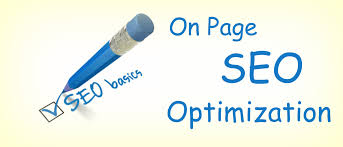Some of the on-page SEO methods available are obvious (like optimizing titles and headings), but when you really dig deep down into your options you’ll find that there are a lot of on-page techniques out there. They may not be as popular or make as big of a difference in your SEO as something off-page, but the more you can do the better. The great thing about on-page SEO as well is the fact that it’s easy—sometimes all you need is to do something once and you’re set to go. Below are ten of these techniques and how to get started:
Use Internal Linking
This is huge for your website’s SEO because it helps your readers navigate to different and relevant pages throughout your website. Because Google takes navigation so seriously, this is one of the easiest things you can do to help improve your overall SEO. You have to always make sure links are relevant, not broken, and do not eventually become broken, but if you can be careful and do that you’re set to go.
If you haven’t been including internal links thus far, not only can you start moving forward, but you also can easily go back to your old content and include internal links. It’s definitely time consuming, but it could be well worth it if you need a small SEO pick-me-up (not to mention the opportunities internal links offer for readers to stay on your site!).
Optimize around a Keyword Topic, Not an Actual Keyword
The days of worrying about keyword density and keyword anchor text are over, and in fact if you try to revert back to those old tactics you may end up really hurting your SEO. However, that doesn’t mean that you shouldn’t think about a general topic and write around that topic. Use keywords and variations of keywords in your titles and throughout your piece to help make things easy for the search engine bots. You always want to write for readers first, but remember that Google now focuses on semantic SEO. In other words, variations of your “keyword” still work, so it makes it easy to write. Learn more about semantic SEO here (hint: that was an internal link!).
Focus on a Simple URL Structure
URL structure isn’t something that many writers think about because it can seem intimidating at first, but you actually don’t have to know much about development or coding to take control. When creating the perfect URL, you want to make sure that it is simple and easy to read, which means avoiding dynamic parameters. In other words, you don’t want to have a URL that looks like this: www.example.com/index.php?product=1234&sort=price.
Instead, according to a Moz article you should follow a patter of domain, top-level domain, folders, page, name anchor. A good URL would then look like this: www.example.com/topics/subtopic/descriptive-product-name#top
This is great for user experience and will help improve your SEO with the search engine bots. You can visit here to learn how to make these kinds of changes.
Optimize Your Image Alt Text
This is one of the easiest on-page SEO methods you can use; yet so many companies miss it. You want search engines to be able to know what your image is all about, and they can’t do that unless you’re labeling that image correctly. If you do label it correctly, which includes using a keyword in the alt text and file name, it gives Google more opportunities to link back to your website. Naturally, this is good for SEO. It’s as simple as that.
Improve Your Site Speed
Site speed is important for user experience, which means it’s important to Google. If you have a slow site speed your SEO will suffer, so consider diagnosing your speed problems with the Google PageSpeed Insights tool here. In general, site speed will slow down if you are using images that are too large, a lot of images, too many plugins, too many pingbacks and trackbacks, and more. Check out this article for a full report of why page speed load time matters for SEO and how to make changes.
Focus on Mobile and Responsive Designs
April 21 of this year marked what many experts called “mobilegeddon,” which basically referred to Google’s official crackdown on mobile sites. If your site wasn’t ready for mobile, your rankings were going to suffer. Always make sure that when optimizing on-page you are thinking about mobile as well. Responsive designs are the number one way to make sure your website is transferring over nicely, but there are other things you can do (such as create a mobile app). Keep this in mind and really research and look at your metrics to see what’s working and what’s not working when it comes to mobile.
Don’t Forget HTTPS Encryption
This one is a little bit newer and maybe not as important as the others, but Google has finally admitted that an HTTPS site will rank higher than the same site with an HTTP address. HTTPS helps make sure that your website is extra secure and will not be as easily hacked or spammed. In the past only companies that housed confidential information worried about being HTTPS secured, but now that this is also a ranking factor this is no longer the case. Learn how to switch your site here.
Are there any other on-page techniques you would add to the list? Let us know in the comment section below.
